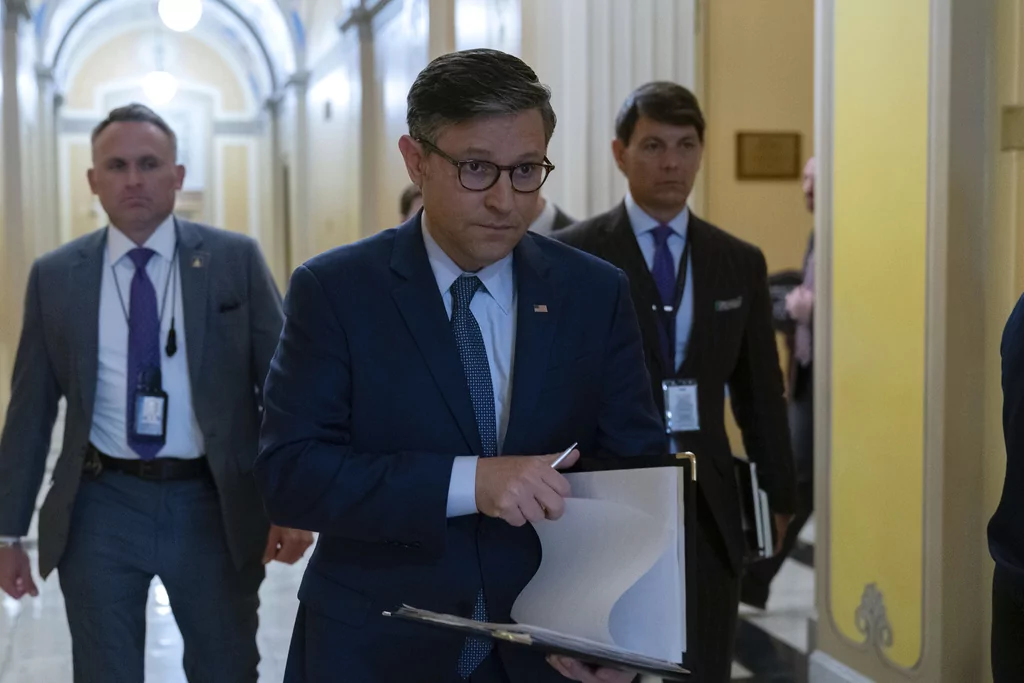

The House will bypass typical procedures to advance a three-month continuing resolution to fund the government temporarily after some infighting within the GOP conference threatened the spending deal’s fate.
House Republican leaders pulled the CR from the Rules Committee on Monday night to avoid the legislation being advanced under traditional House rules. Instead, the House will vote on the bill under suspension of rules, meaning it will require a two-thirds majority vote to pass but will avoid a procedural hurdle that could have doomed its passage thanks to Republican infighting.
If the legislation advanced to the floor under a rule package, it would’ve first gone through a procedural vote that allows lawmakers to begin debate before voting on final passage.
Advancing a rule is typically voted on along party lines and rarely fails on the House floor. However, House Republicans have weaponized the procedure several times over the last year, occasionally rejecting rule packages if they disagree with the legislation.
With House Republicans’ current majority, Speaker Mike Johnson (R-LA) can only afford to lose three GOP votes on the rule before it fails, assuming there are no absences and all Democrats vote against it. Even though Democrats are expected to support the three-month CR, it’s rare for lawmakers to cross party lines to support a rule package.
At least two Republicans had already said they would oppose the rule package if it was brought to the floor, including Reps. Ralph Norman (R-SC) and Chip Roy (R-TX), giving GOP leadership a slim margin to advance the CR through typical procedure.
Because of Republicans’ slim majority in the House, leaders can only afford to lose three defections on the rule vote if they brought it to the floor through that procedure, prompting leadership to instead bypass that process to ensure its success.
The last-minute decision to pull the CR out of Rules consideration came as a surprise to some members of the committee, including Democratic ranking member Jim McGovern (D-MA).
“I’m noticing that … the CR is not part of this rule,” McGovern said to Chairman Michael Burgess (R-TX). “I’m correct in that, right?”
“That’s correct,” Burgess said.
“So I assume we’ll bring it up under suspension, which is the way I thought we would to begin with,” McGovern replied.
“You’ll get your wish,” Burgess confirmed.
The bill is expected to reach the floor for a vote on Wednesday and will require significant support from Democrats to move past the finish line.
The continuing resolution, released on Sunday, would continue current spending levels until Dec. 20, buying lawmakers time to continue negotiations for the federal budget for the 2025 fiscal year.
The proposal comes after the House failed to pass its initial government funding proposal that would have extended current spending levels until the end of March 2025 and include a voting integrity measure known as the SAVE Act that Johnson sought to attach as a policy win for Republicans.
But the absence of the SAVE Act is likely to garner the support of Democrats, which will be crucial to pass the lower chamber.
CLICK HERE TO READ MORE FROM THE WASHINGTON EXAMINER
The continuing resolution does not include any additional spending for most government departments, although it does include a provision that would allocate an additional $231 million to the agency to protect presidential candidates ahead of the November contest. Support for that increased funding comes after a second failed assassination attempt against Trump earlier this month that has prompted concern from both sides of the aisle.
If passed, the legislation would then head to the Senate for consideration before being signed by President Joe Biden. Federal funding is set to lapse at midnight on Oct. 1.






